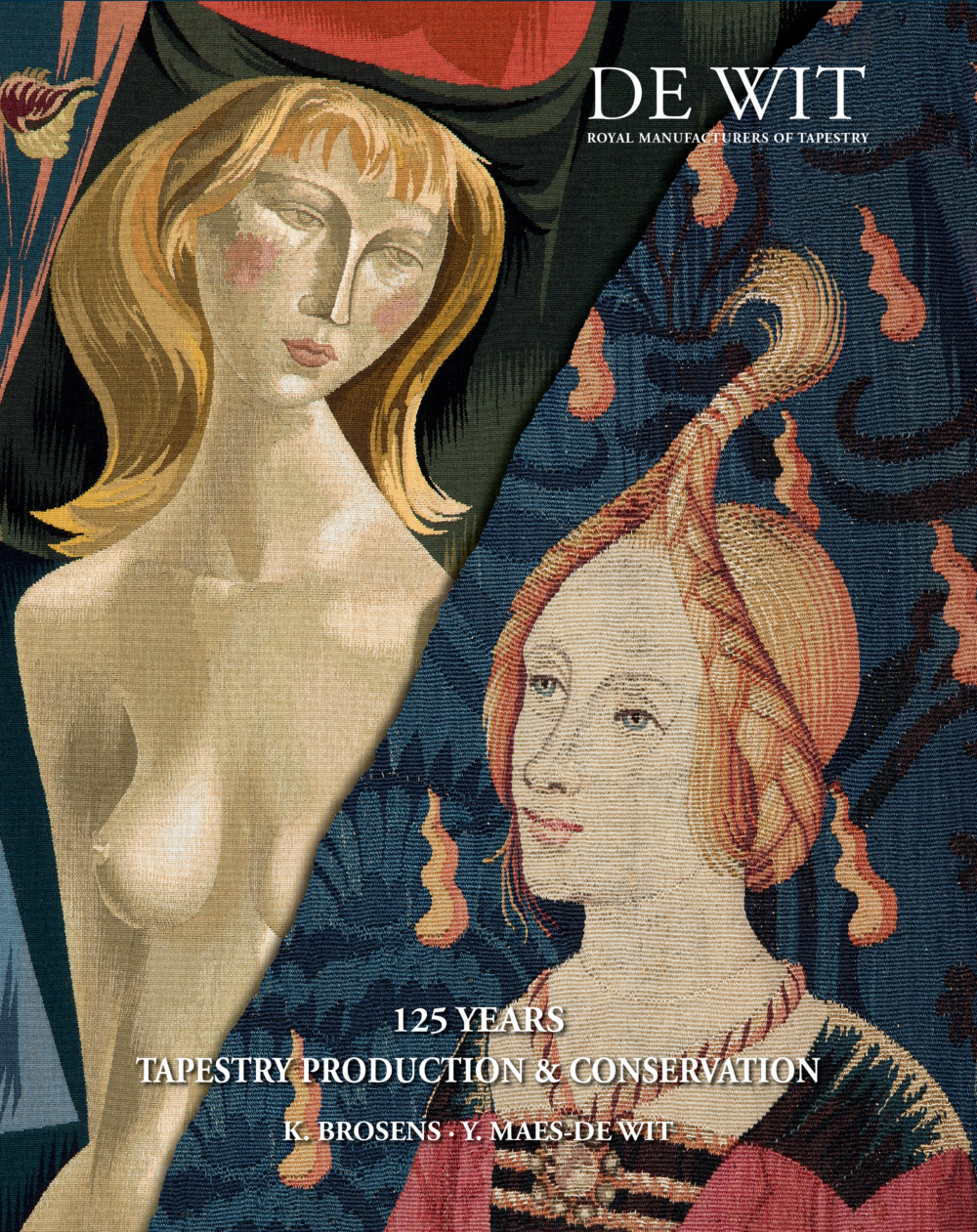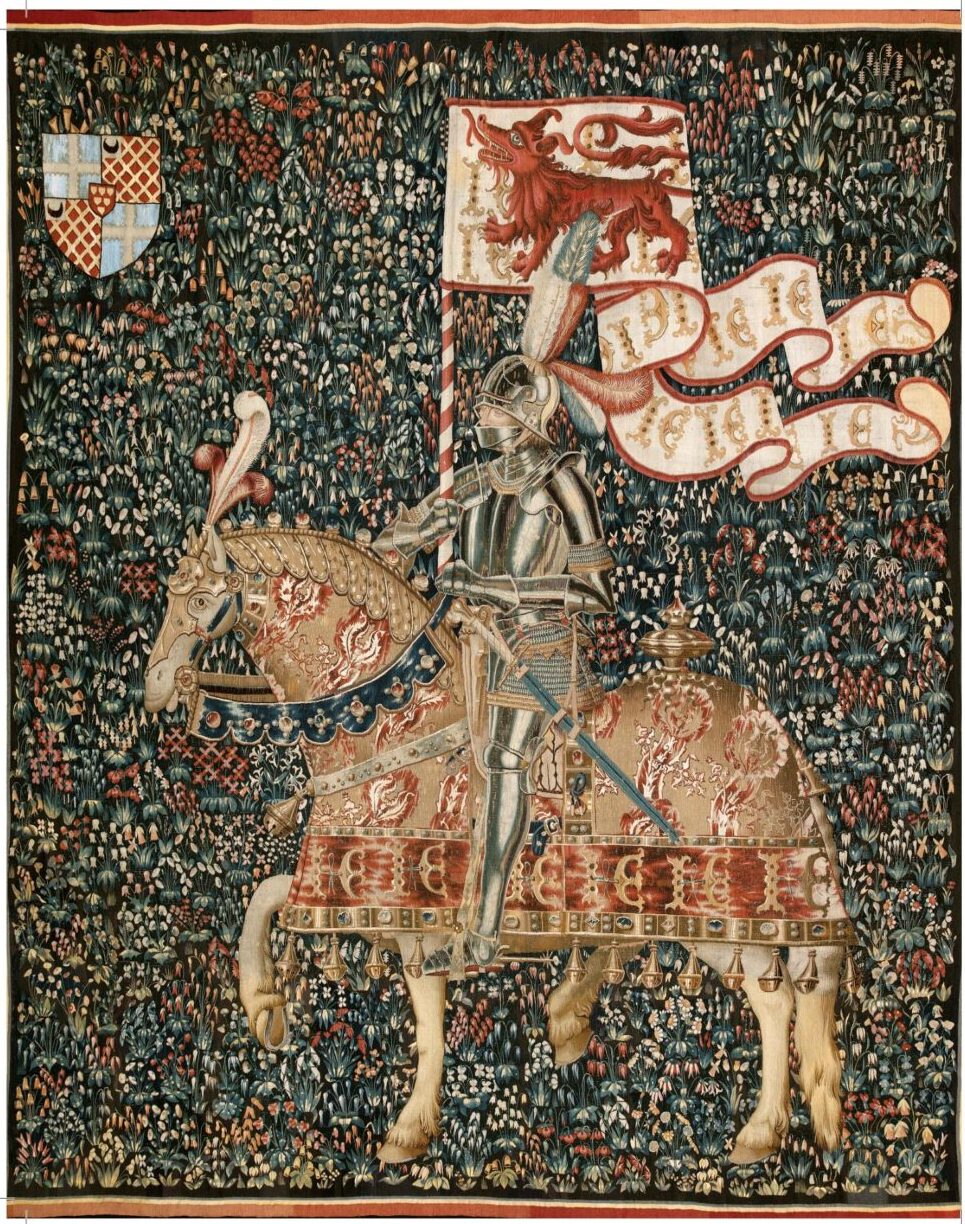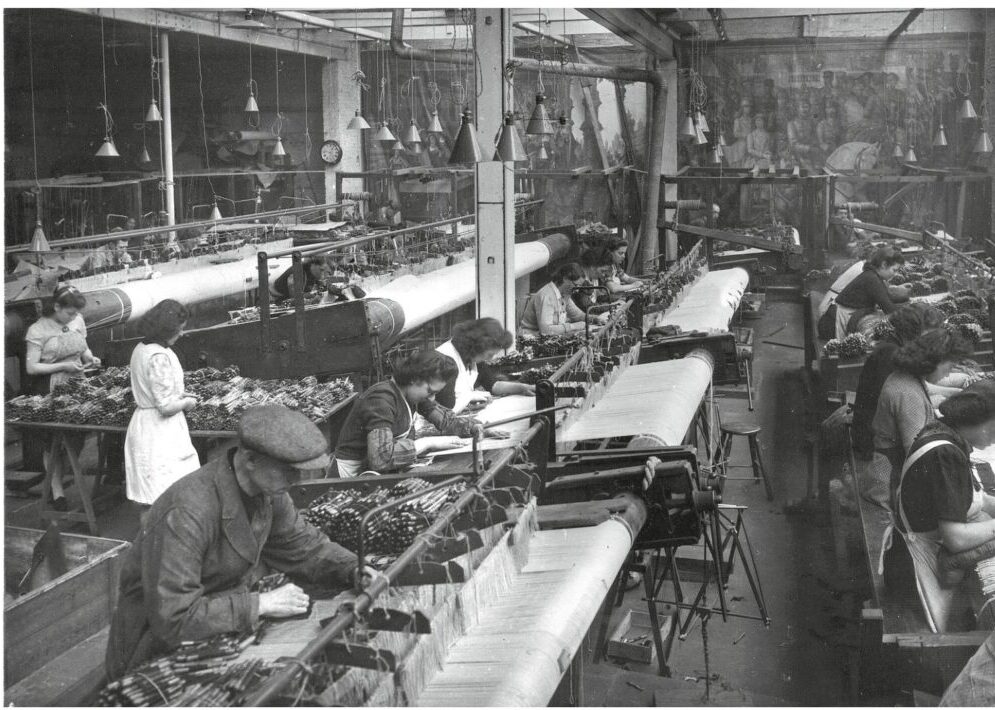125 Years of De Wit
After undergoing four years of cleaning and conservation The Mounted Knight with the Arms of Jean de Daillon tapestry, southern Netherlands, ca. 1483, has returned to display at the National Trust’s Montacute House in Somerset, England. The tapestry featured on the cover of HALI 204 in relation to a book review of Tapestry Production & Conservation 125 Years of De Wit – Royal Manufacturers of Tapestry by Maria Taboga and Nello Forti Grazzini.
Divided into two complementary but independent parts, Koenrad Brosens contextualises the De Wit story within the wider one of tapestry production in Europe while Yvan Maes De Wit (the third and current owner and director of the De Wit company) describes in detail some of the most striking restorations carried out under his direction over the past forty years.
We are dealing with a work that is exceptional for the seriousness, density and innovation of its content—an essential point of reference regarding an important part of the history of tapestry production, and current concerns in respect of restoration.

Tapestry production & conservation 125 years of De Wit-Royal manufacturers of tapestry by Koenrad Brosens & Yvan Maes De Wit Brepols Publishers
Founder of the factory, Theophiel De Wit (1863–1941), learnt the tricks of the trade in Mechelen from 1874 to 1889 as an apprentice worker at the French firm Braquenié. His first successes came through pandering to local taste, which required only reproductions of, or variations on, the most famous tapestries of the past, especially late Gothic examples.
Within a few years of having passed responsibility to his son Gaspard the number of looms and employees had tripled. By the 1920s the French factories were weaving from cartoons provided by progressive artists of the day. As Brosens stresses, Gaspard’s comparatively unadventurous Belgian factory was one of the few to survive the economic crisis of 1929, albeit with financial help from the state. De Wit eventually dared to include some more contemporary designs almost as a sideline, as long as they maintained a connection with pre-renaissance aesthetics and techniques. After the Second World War modernism was looked on more kindly by De Wit (though the factory continued to cater for more nostalgic customers). By the 1960s tapestries based on newly minted cartoons represented the greater part of the factory’s catalogue, although the rule was always to innovate with caution.
Yvan Maes De Wit (b. 1950): Gaspard’s nephew, representative of the fourth De Wit generation. Yvan Maes realised that, with falling demand, the era of contemporary tapestries was about to come to an end. Interest in old tapestries was not, however, diminishing, creating a need for centres where they could be washed and restored with technologies that were up-to-the-minute and would not be damaging or invasive.
He adopts an educational approach in his introduction to the second part of the book. Even a non-specialist reader is thus safely guided into what follows, more than 100 pages summarising the successful procedures carried out on over 2,000 tapestries, presented not in chronological order but according to the specific process.

Mounted Knight with the Arms of Jean de Daillon tapestry, southern Netherlands, ca. 1483. Photographed after aerosol cleaning for the National Trust in 2019. Montacute House, Somerset
The weaving of new works came to an end in the 1980s. Within a few years the De Wit factory had been transformed into the only privately owned restoration workshop able to compete successfully with the major institutions operating in the field. When the restoration business began, it adopted the internationally accepted guidelines but Yvan Maes innovations produced improved results within a shorter time and thus less expensively.
Every single case in the volume has been chosen to show the complexity of the interventions on tapestries and the necessity of developing new strategies in order to tackle the issue of preserving them in the best possible way. De Wit has developed an approach that may now be considered standard, the normal method applied to almost all restorations. Although this is highly technical content, it is always a pleasurable as well as an informative read: a gateway to a fascinating world, made of coloured threads, warps and wefts.
Read the article in full in HALI 204


























Comments [0] Sign in to comment